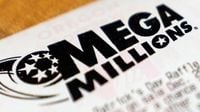The anticipation was palpable across the United States on Tuesday, September 9, 2025, as hopeful players awaited the Mega Millions drawing, lured by an eye-watering $358 million jackpot. The numbers were drawn at 11 p.m. ET, as they are every Tuesday and Friday, and, as reported by multiple outlets including the Detroit Free Press and USA Today, the winning combination was 6, 43, 52, 64, and 65, with the Mega Ball number being 22.
But for all the dreams riding on those numbers, no one managed to match all six, leaving the jackpot untouched and setting the stage for an even bigger prize in the next drawing. According to the Mega Millions website, the jackpot has now rolled over to an estimated $381 million, with a cash option of $175 million for the upcoming Friday, September 12, 2025, drawing.
This latest rollover marks the 20th time the Mega Millions jackpot has gone unclaimed since it last reset to $50 million on July 1, 2025. The last time someone struck gold was on June 27, 2025, when a single ticket in Virginia matched all five numbers and the Mega Ball, earning its holder a $348 million windfall. That winner, as USA Today notes, had the option of taking a lump-sum cash payment or an annuity paid out over 30 years, with each payment 5% bigger than the last to help "protect winners’ lifestyle and purchasing power in periods of inflation," according to the Mega Millions website.
While the jackpot eluded players nationwide this week, there was still reason for celebration. A ticket purchased in California matched five numbers plus the 3X multiplier, netting its owner a $3 million prize. This multiplier feature, which replaced the previous Megaplier, is now a built-in part of every $5 Mega Millions ticket. It randomly increases non-jackpot prizes by two, three, four, five, or even ten times, providing a shot at substantial secondary winnings for those who come close but don’t quite hit the jackpot.
So, how does Mega Millions work? For $5, each player selects five numbers from a pool of 1 to 70 (the white balls) and one number from 1 to 24 (the gold Mega Ball). If you’re feeling indecisive or just want to leave it to fate, the Easy Pick or Quick Pick option lets a computer randomly generate the numbers for you. Tickets can be purchased at convenience stores, gas stations, grocery stores, or, in some states, online. The cutoff for buying tickets varies: in Michigan and several other states, sales close at 10:45 p.m. on draw nights, while in New York, the deadline is 10 p.m., and in New Jersey and Connecticut, it’s 10:45 p.m.
The odds of winning the Mega Millions jackpot? A daunting 1 in 290,472,336, according to the official site. Yet, as lottery officials and news outlets like USA Today are fond of saying, "it could happen to you." After all, history is filled with stories of ordinary people becoming overnight millionaires. And with each rollover, the excitement grows—so too do the lines at ticket counters and the buzz on social media.
The Mega Millions prizes aren’t limited to the jackpot alone. Matching five white balls without the Mega Ball can net you anywhere from $2 million to $10 million, depending on the multiplier. Four white balls plus the Mega Ball can win you between $20,000 and $100,000. Even matching just the Mega Ball alone guarantees you at least $10, with the possibility of that prize being multiplied. These built-in multipliers have added a new layer of excitement, giving players more ways to win big even if they miss the top prize.
For the truly lucky jackpot winner, the choice between an annuity and a lump-sum payout is significant. The annuity option, as described by Mega Millions, provides one immediate payment followed by 29 annual payments, each increasing by 5%. This structure aims to protect winners from the pitfalls of sudden wealth and inflation, a lesson learned from past winners who found themselves overwhelmed by their windfall. The lump-sum option, meanwhile, offers immediate access to all the cash in the jackpot prize pool, though it’s typically a smaller amount than the advertised jackpot.
It’s worth noting that if more than one person wins the jackpot in a single drawing, the prize is split equally among all winning tickets. And for those playing in states like Florida, there are specific rules about how long you have to claim your prize—180 days for most winnings, and 60 days if you opt for the lump-sum payout. In Florida, anonymity is a complex issue: while winners’ names and city of residence become public record, there’s a temporary exemption for prizes of $250,000 or more, shielding winners’ identities for 90 days unless they choose to waive that right.
The Mega Millions game has a storied history of massive jackpots. As of September 9, 2025, the largest ever was the $1.602 billion prize won in Florida on August 8, 2023. Other historic jackpots include $1.537 billion in South Carolina (2018), $1.348 billion in Maine (2023), and several more topping the billion-dollar mark in Illinois, California, New Jersey, and Michigan. The United States has seen 13 lottery jackpots reach or exceed $1 billion, with the all-time record—$2.04 billion—claimed in the Powerball drawing of November 7, 2022.
While the odds are long and the dreams are big, the excitement of the lottery continues to captivate millions. For now, the Mega Millions jackpot keeps growing, the anticipation building with each rollover. As ticket holders across the country check and recheck their numbers, one thing is certain: someone, someday, will beat the odds. Until then, the question lingers—could the next drawing finally crown a new multimillionaire?
For now, the chase continues, and with it, the hopes and dreams of players everywhere.
